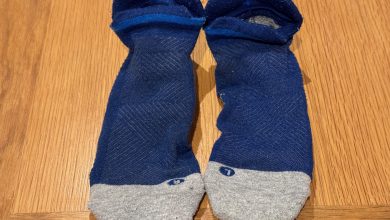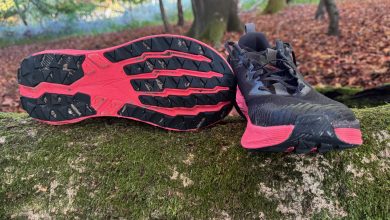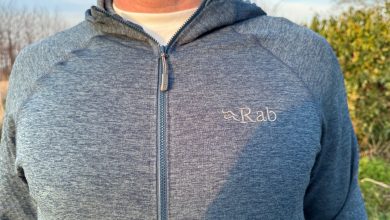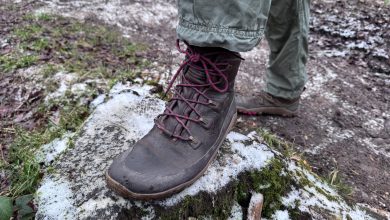What’s in my foot-care kit, and why
One of my ‘must-carry’ hiking items that probably owes a lot to my military training is my foot-care kit. Although it could be seen as unnecessary weight, and probably is by many ultra-light hikers, for me it’s a crucial way to make sure I stay reasonably comfortable and healthy for day after day of hiking, potentially in pouring rain or through streams and rivers.
A basic footcare kit really needs just some blister plasters or tape, and some foot powder, but mine is a bit more substantive, and incorporates a few ‘health and wellbeing’ items that aren’t strictly foot-related. Here’s what I include, and why:
Compeed: Apparently the US version of this classic blister plaster isn’t nearly as good, but the UK stuff is absolutely amazing. An extremely sticky, resilient, padded plaster, it can stay in place for days and take almost all of the pressure and rubbing off a hot spot and blister. They are very much a ‘temporary fix’, and probably not ideal for very long-term use as they stop the wound breathing or developing hard skin over a sore spot, but sometimes a temporary fix is exactly what you need, and compeed can make the difference between a pleasant day out and a hellish slog.
Tweezers and nail clippers: Tweezers for removing splinters, thorns, etc. Nail clippers are absolutely essential for keeping toenails clipped and trim, which prevents pressure at the end of boots/shoes, and all the problems that brings.
Tape (micropore and zinc oxide): Two different types of tape that are ideal for covering blisters and hotspots, not only on the feet but on back and shoulders, hands (certainly vital for rowers – micropore and zinc oxide tape got me through rowing camps in my youth) or anywhere else. Micropore tape is more breathable, but zinc oxide is more sticky. A combo of the two works nicely.
Foot powder: The most widely available is medicated powder for, for example, athlete’s foot. This is probably good, but it doesn’t have to be medicated, it’s just for drying your feet at the end of a long day hiking. This is absolutely vital, even if you don’t think your feet are particularly wet – it only takes a few days of damp feet and damp socks for you to potentially start suffering from trench foot.
Disinfectant: Any topical disinfectant is worth carrying – iodine is ok, I like the spray dettol. This isn’t just for your feet, but for any kind of injury, even a small scratch could get infected, especially if you’re unlucky and something gets in the wound, and that can be a real risk when you’re on the trail and not able to stay properly clean. I’d rather not take the risk, so I chuck topical disinfectant on any wounds that break the skin.
Chafe cream: For obvious reasons. Chafing is the worst.
I’d recommend anyone doing multi-day hikes starts assembling some sort of kit like this, and takes the time to look after themselves. There’s nothing worse than a hike being derailed, or made more unpleasant than it needs to be, because of a small blister or wound, chafing, or incipient trench-foot.
What’s in your foot care kit? Any tips, or advice you have – please leave them in the comments section below. And don’t forget to check out our blister prevention tips.




